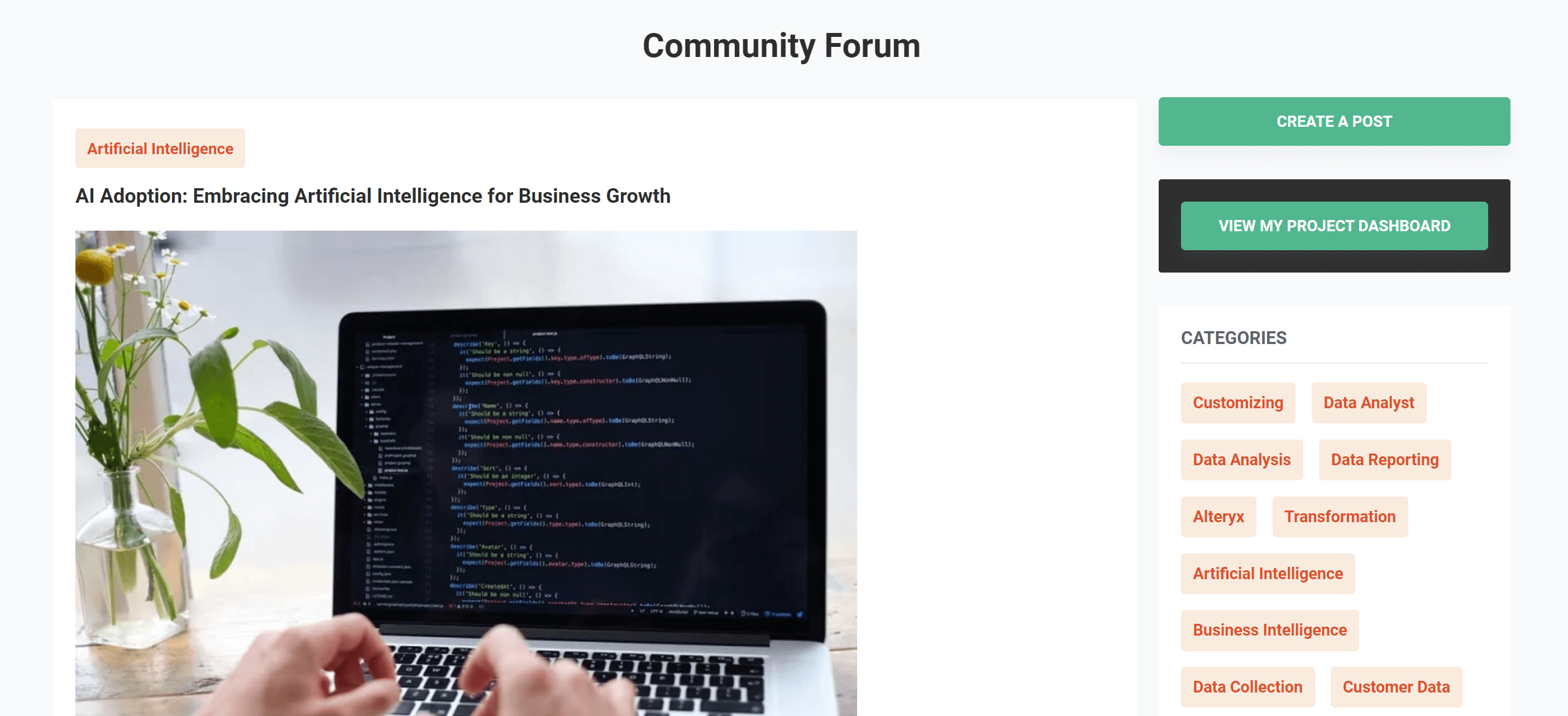How to Get Started with Business Intelligence

Table of content
Benefits of business intelligence for businesses
Getting Started with BI: A Step-by-Step Guide
Conclusion
Benefits of business intelligence for businesses :
Reduced Complexity
Managing disparate data sources is naturally complex, especially as companies utilize various storage mediums like on-site servers, collocated data centers, and the cloud. The increasing use of mobile devices and the rise of hybrid work environments only add to this complexity. Business intelligence (BI) tools can sift through multiple data sources simultaneously, reducing complexity and increasing visibility. This is particularly beneficial for small businesses, which often lack the resources to manually handle complex data integration.
Improved Data Access
Data is only useful if it can be accessed when and where it is needed. However, data stored across multiple silos and platforms can make access challenging. Often, IT teams spend significant time bridging these gaps instead of leveraging the data insights. Robust BI frameworks streamline data access across the organization, making it easier to retrieve and use the data efficiently. BI for small businesses is crucial as it allows even limited IT resources to access and analyze important data without extensive technical expertise.
Enhanced Productivity
Improved data access combined with relevant insights leads to enhanced productivity. With accurate data, companies can create visualizations that highlight current trends, helping IT teams and executives identify which operations are effective and which need improvement. Our customers have reported that having unified dashboards for account management, leadership, and technical teams boosts productivity significantly. Instead of wasting time manually compiling reports from separate systems, BI tools allow for interactive data analysis, providing a clearer understanding of business results. This knowledge empowers teams to demonstrate their positive impact and uncover new business priorities. For small businesses, BI tools can be a game-changer, enabling them to compete with larger companies by making data-driven decisions quickly and effectively.
Right Time, Right Data
Data is dynamic, constantly generated by customer interactions, warehouse deliveries, and product sales. BI tools ensure that staff can access the appropriate data when they need it, enabling timely actions. BI for business, especially small business, means being able to react to market changes and customer needs promptly, which is vital for maintaining competitiveness.
Increased Data Quality
Poor-quality data leads to poor outcomes. Outdated or contextually misplaced data can result in business actions that harm rather than help ROI. BI tools enhance data quality through in-depth analysis and comparison, improving overall outcomes. For small businesses, maintaining high data quality is essential to make informed decisions and avoid costly mistakes.
Empowered Decision-Making
A major benefit of BI is significantly improved decision-making. Clear data visualizations based on relevant, accurate information allow C-suites to make informed decisions that benefit the business on a large scale. Having a complete picture supports better decision-making. BI for business, and particularly BI for small businesses, provides the clarity needed to make strategic decisions that drive growth and efficiency.
Lower Costs
BI solutions can help lower overall costs. Accurate, comprehensive data reduces the likelihood of mistakes, eliminating the need to backtrack on decisions, rerun analyses, or reevaluate data sources. This saves both time and money, especially when launching new applications and services across multiple touchpoints. Understanding consumer use patterns and potential pitfalls helps keep costs under control. For small businesses, this cost-saving aspect of BI is critical as they often operate with tighter budgets.
Trend Insights
As customer preferences and market forces evolve, it’s crucial to anticipate what’s coming next. While BI isn’t a crystal ball, it provides insights into emerging trends, helping companies set up for future success. In-depth trend analysis allows for the creation of short- and long-term business plans that are both data-driven and flexible enough to adapt to changing trends. BI for business, and specifically BI for small businesses, enables companies to stay ahead of the curve by making proactive adjustments based on solid data.
Getting Started with BI: A Step-by-Step Guide
1.Define your goals
Before diving into Business Intelligence (BI) tools and techniques, it’s crucial to have a clear understanding of your objectives. What specific questions do you want to answer, problems do you aim to solve, or opportunities do you wish to explore with Business Intelligence? How will you measure success and track progress? Defining your goals will help you focus your Business Intelligence efforts and align them with your overall business strategy.
2. Identify your data sources
The next step is to determine where you will obtain the data required for your BI project. Potential data sources include internal databases, external sources, surveys, web analytics, social media, and more. You must assess the quality, relevance, and availability of these data sources, as well as how they can be integrated and accessed. Additionally, you need to ensure compliance with data privacy and security regulations and policies applicable to your data.
3. Choose the Right BI Tools and Technologies.
Once you have identified your data sources, the next step is to choose the business intelligence tools that will help you process, analyze, and visualize the data. There are many business intelligence tools available in the market, ranging from simple spreadsheets to complex software platforms. When selecting your business intelligence tools, consider your budget, skills, and specific needs. Some features to look for include data integration, data cleansing, data modeling, data analysis, data visualization, dashboard creation, report generation, and collaboration capabilities.
4. Implement and Integrate your BI System.
Implementing your BI solution comes next after selecting your BI tools. Effective business intelligence implementation involves setting up the data infrastructure, loading and transforming the data, creating data models and queries, performing data analysis, and building dashboards and reports. It’s essential to test and validate the results to ensure accuracy and reliability. Additionally, you need to train and support the users who will utilize the business intelligence solution, providing them with the necessary documentation and guidance for a smooth transition.
Conclusion :
Business intelligence (BI) offers significant advantages for businesses of all sizes, from reducing complexity and improving data access to enhancing productivity and empowering decision-making. BI tools enable companies to manage dynamic data, maintain high data quality, and lower costs, all while providing valuable trend insights for future planning. For small businesses, BI is particularly transformative, leveling the playing field with larger competitors by enabling quick, data-driven decisions. By following a clear, step-by-step approach to BI implementation—defining goals, identifying data sources, selecting the right tools, and effectively integrating the system—businesses can harness the full potential of BI to drive growth and efficiency.
Get your data results fast and accelerate your business performance with the insights you need today.



